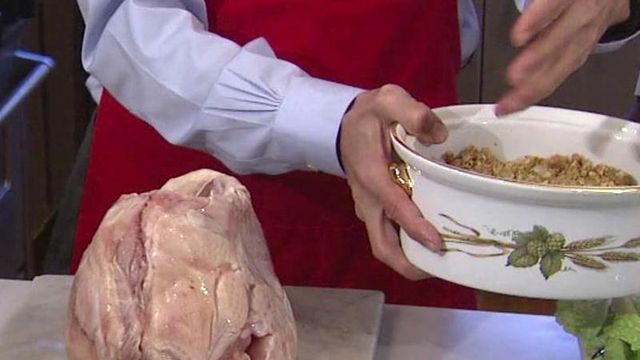Health Team
Safety tips for cooking Thanksgiving turkey
Americans eat an average of 13 pounds of turkey a year, with most of it being consumed on Thanksgiving and the days following, thanks to leftovers. WRAL's Health Team offers tips for how to stay safe while preparing turkey this Thanksgiving.
Posted — UpdatedRALEIGH, N.C. — Americans eat an average of 13 pounds of turkey a year, with most of it being consumed on Thanksgiving and the days following, thanks to leftovers.
Unfortunately, Thanksgiving is also a day when many food-borne illnesses occur at family gatherings. The meal is larger than average, turkeys are bigger and more difficult to prepare and the increase in the number of dishes presents more chances for cross-contamination.
Here are a few important things to remember when preparing a turkey for Thanksgiving.
Proper thawing techniques
- The safest method is inside the refrigerator, but it takes at least two days.
- The turkey can be placed in cold water in its plastic cover, but the water should be changed every 30 minutes. This method takes about eight hours.
- The microwave works too, but be sure to cook the turkey immediately after it’s thawed.
Keeping the kitchen clean
- Wash hands thoroughly with soap and water after handling raw meat, even if it means several trips to the sink to re-wash.
- Use cutting boards with an impervious surface like glass or marble.
- Use separate cutting boards for vegetables, or wash cutting boards thoroughly after they’ve been used for meat.
- With turkey stuffing, there’s less contamination risk when prepared in a casserole dish rather than inside the bird.
Turkey prep
- Heat the oven to between 325 and 375 degrees and cook the turkey for 15 to 20 minutes per pound.
- Be sure to use a meat thermometer and cook the turkey to an internal temperature of at least 165 degrees Farenheit to ensure bacteria are killed.
What to do with all those leftovers
- Never leave food out longer than two hours before refrigerating.
- Don’t keep gravy or dressing longer than two days.
- Everything else needs to be frozen or thrown out within four days.
• Credits
Copyright 2024 by Capitol Broadcasting Company. All rights reserved. This material may not be published, broadcast, rewritten or redistributed.






